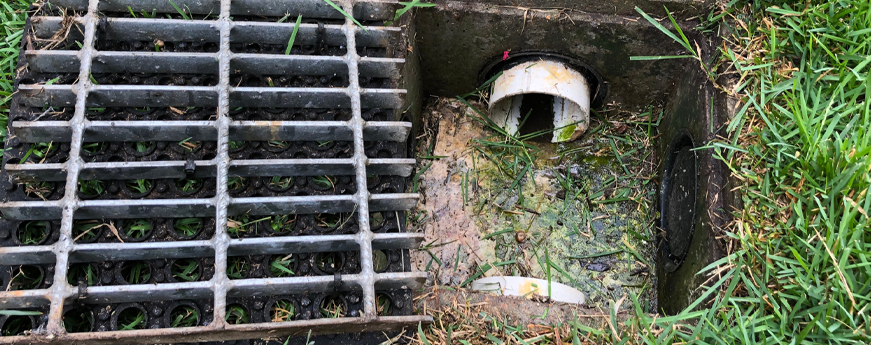
Prevent Potential Water Damage
A well-maintained yard is a source of pride for homeowners, but beneath the lush grass and blooming flowers lies a critical but often overlooked component: yard drains. These unsung heroes prevent water from pooling, protect against erosion, and safeguard your property from potential water damage. To ensure they function optimally, regular cleaning and maintenance are essential.
1. Preventing Blockages
Over time, yard drains can accumulate debris such as leaves, twigs, and even small stones. This buildup obstructs the flow of water, rendering the drain ineffective. Regular cleaning ensures that these obstructions are removed, allowing water to flow freely.
2. Avoiding Water Accumulation
When yard drains are clogged, water can accumulate in low-lying areas, leading to unsightly puddles or even flooding during heavy rains. By keeping the drains clean, you prevent these waterlogged patches from forming, maintaining a pristine landscape.
3. Preserving Soil Integrity
Excess water pooling in your yard can lead to soil erosion. This undermines the stability of your landscaping, potentially causing uneven ground or even sinkholes. Clean drains prevent this by efficiently channeling water away from sensitive areas.
4. Warding Off Mosquito Breeding
Stagnant water is a breeding ground for mosquitoes, which can pose health risks to you and your family. By keeping yard drains clear, you eliminate potential breeding sites, contributing to a safer and more enjoyable outdoor environment.
5. Extending the Life of Drainage Systems
Yard drains are a crucial part of your overall drainage system. When they’re well-maintained, they work in harmony with other components to protect your property from water damage. Neglecting their upkeep can lead to stress on the entire system and potentially costly repairs down the line.
Steps to Clean Yard Drains
- Safety First: Before you begin, ensure the area is safe to work in. Use gloves and, if necessary, wear protective eyewear.
- Remove Surface Debris: Start by clearing away any visible debris around the drain’s entrance. This may include leaves, sticks, or loose soil.
- Flush with Water: Use a garden hose to flush water through the drain. This helps dislodge any remaining loose debris and gives you an initial assessment of the flow.
- Use a Drain Snake or Auger: For more stubborn clogs, a drain snake or auger can be employed to physically break up or extract blockages.
- Inspect for Damage: While cleaning, take the opportunity to inspect the drain for any signs of damage or deterioration. Addressing small issues early can prevent more significant problems later.
- Clear Surrounding Vegetation: Trim back any overhanging branches or shrubs that might contribute to future debris buildup.
- Schedule Regular Check-Ups: Make it a routine to inspect and clean your yard drains, especially before the rainy season. This proactive approach ensures they’re always ready to handle excess water.
Yard drains are the unsung heroes of a well-maintained landscape. Regular cleaning and maintenance not only preserve their effectiveness but also contribute to the overall health and beauty of your property. By investing a little time in this essential task, you’re safeguarding your outdoor space for years to come. Remember, a well-drained yard is a happy yard!
Call us now at (562) 343-6022

